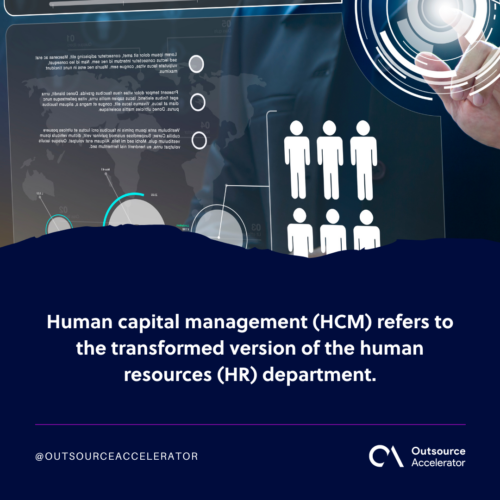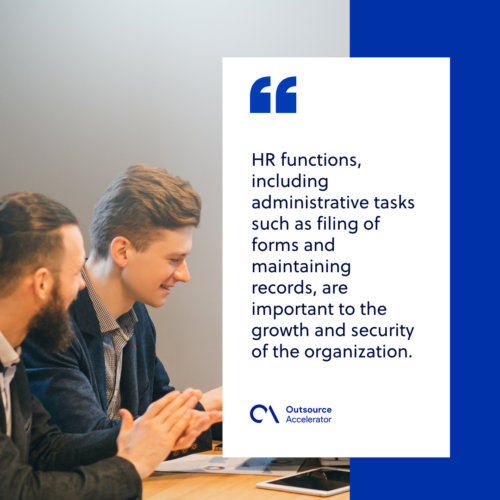Human capital management (HCM)
Definition
What is human capital management?
Human capital management (HCM) refers to the transformed version of the human resources (HR) department. While it serves the same purpose as the HR unit, some companies have adopted a more generalized approach to the old practice.
This unit focuses more on the holistic side of things while ensuring that the company and its employees are performing well.

A quick history of the human capital department
The term first circulated between the 1950s and the 1960s when machines were starting to replace people. Automation was seen as the next best thing rather than employing people for doing routine and repetitive tasks.
During this time, employers and industry pioneers started seeing the value in their workers. They see that people have job-specific skill sets that can never replace a machine—hence, the use of “capital.”
While the HR sector still exists in many companies across the globe, some have already been using its successor as the catch-all unit.
6 reasons why the human capital department is important
As expected, there are certain benefits that the human capital management department puts forth. These benefits are exactly the reason why more companies should adopt the concept.
Talent acquisition and retention
A high employee churn rate is a bad look for the company. It could mean that the workplace is toxic or the management is disinterested in their employees’ welfare.
With a human capital department, they make sure that each employee is valued and heard of. They also ensure that the talents they hire and onboard are a fit for the company’s culture.
Workforce management
The unit ensures that employees are well-compensated while being cost-effective at the same time. Studies have shown that non-monetary benefits are just as important as monetary incentives.
The purpose of workforce management is to maximize each employee’s productivity and talents—the unit oversees this process and sets it into motion.
Improved HR functions
HR functions, including administrative tasks such as filing of forms and maintaining records, are important to the growth and security of the organization. The unit ensures that each process is done to fruition and is done according to labor laws and regulations.

Equality, diversity, and inclusion (EDI)
A human capital management unit ensures that the company complies with equal employment opportunity programs that the government applies to all organizations. This includes curating a safe and inclusive workplace for all employees from varying backgrounds.
In some companies, EDI is a separate entity from the unit but liaises with them on a regular basis.
Employee engagement
Some cases of poor employee engagement can be mitigated by tackling the root cause head-on. The department of human capital management often does the job of checking in with the employees via surveys, seminars, and meetings to ensure that they are happy and content with their roles.
Distributed teams oftentimes have regular meetings with their managers and unit heads to help them stay engaged.
The difference between human resources and human capital
Human resources refers to the administrative facet of the department whereas the other refers to the contributions that employees give to the business itself. Both deal with the growth and development of workers
They are both pertinent to the company and can never be replaced by any automation software or machines. They serve as the connection between the company as the entity and the workers themselves.







 Independent
Independent




